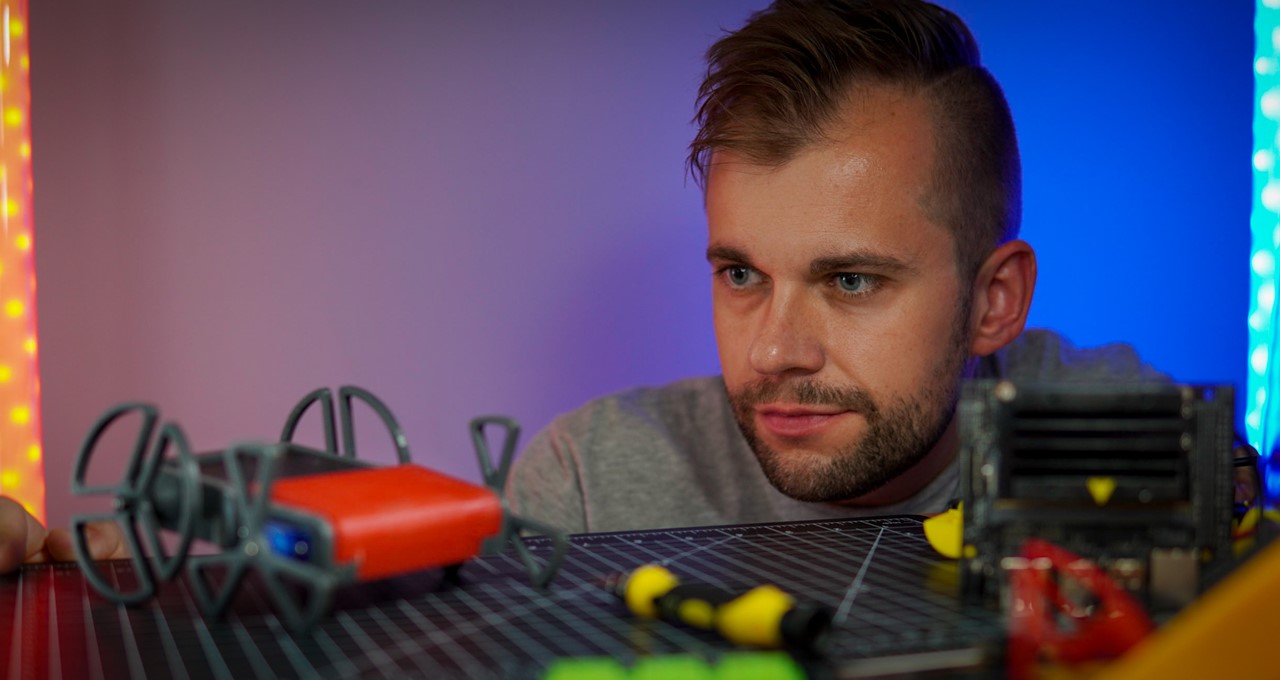Alex Schepelmann went from being a teacher’s assistant for an Intro to Programming class to educating 40,000 YouTube subscribers by championing the mantra: anyone can make something super using AI and machine learning.
His YouTube channel, Super Make Something, posts two types of videos. “Basics” videos provide in-depth explanations of technologies and their methods, using fun, understandable lingo. “Project” videos let viewers follow along with instructions for creating a product.
About the Maker
Schepelmann got a B.S. and M.S. in mechanical engineering from Case Western Reserve University and a Ph.D. in robotics from Carnegie Mellon University. His master’s thesis focused on employing computer vision to identify grass and obstacles in a camera stream, and he was part of a team that created an award-winning autonomous lawnmower.
Now, he’s a technical fellow for an engineering consulting firm and an aerospace contractor supporting various robotics projects in partnership with NASA. In his free time, he creates content for his channel, based out of his home in Cleveland.
His Inspiration
In his undergrad years, Schepelmann saw how classmates found the introductory programming class hard because the assignments didn’t relate to their everyday lives. So, when he got to teach the class as a grad student, he implemented fun projects, like coding a Tamagotchi digital pet.
His aim was to help students realize that choosing topics they’re interested in can make learning easy and enjoyable. Schepelmann later heard from one of his students, an art history major, that his class had inspired her to add a computer science minor to her degree.
“Since then, I’ve thought it was great to introduce these topics to people who might never have considered them or felt that they were too hard,” he said. “I want to show people that AI can be really fun and easy to learn. With YouTube, it’s now possible to reach an audience of any background or age range on a large scale.”
Schepelmann’s YouTube channel started as a hobby during his years at Carnegie Mellon. It’s grown to reach 2.1 million total views on videos explaining 3D printing, robotics and machine learning, including how to use the NVIDIA Jetson platform to train AI models.
His Favorite Jetson Projects
“It’s super, super easy to use the NVIDIA Jetson products,” said Schepelmann. “It’s a great machine learning platform and an inexpensive way for people to learn AI and experiment with computationally intensive applications.”
To show viewers exactly how, he’s created two Jetson-based tutorials:
Machine Learning 101: Intro to Neural Networks – Schepelmann dives into what neural networks are and walks through how to set up the NVIDIA Jetson Nano developer kit to train a neural network model from scratch.
Machine Learning 101: Naive Bayes Classifier – Schepelmann explains how the probabilistic classifier can be used for image processing and speech recognition applications, using the NVIDIA Jetson Xavier NX developer kit to demonstrate.
The creator has released the full code used in both tutorials on his GitHub site for anyone to explore.
Where to Learn More
To make something super with Super Make Something, visit Schepelmann’s YouTube channel.
Discover tools, inspiration and three easy steps to help kickstart your project with AI on our “Get AI, Learn AI, Build AI” page.
